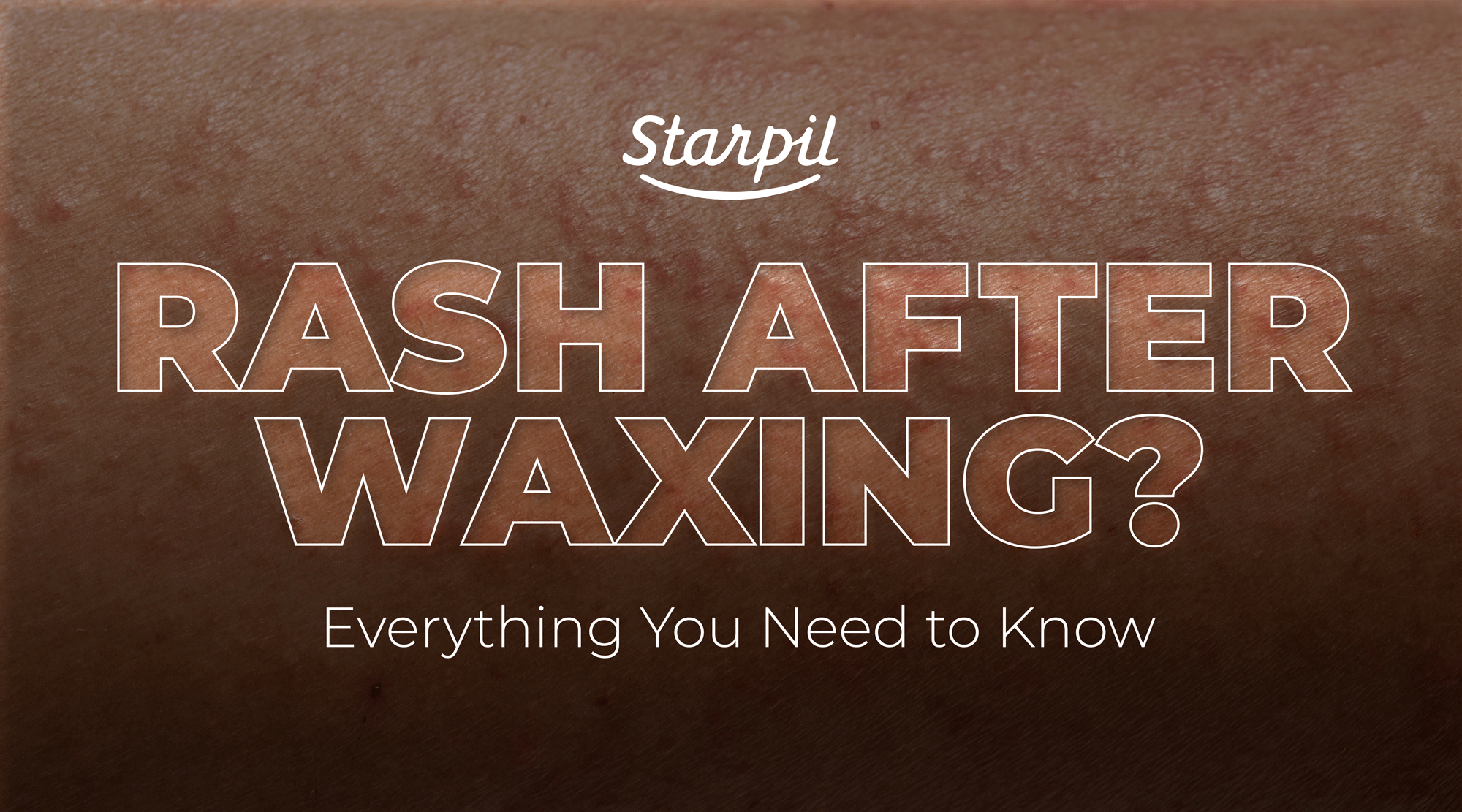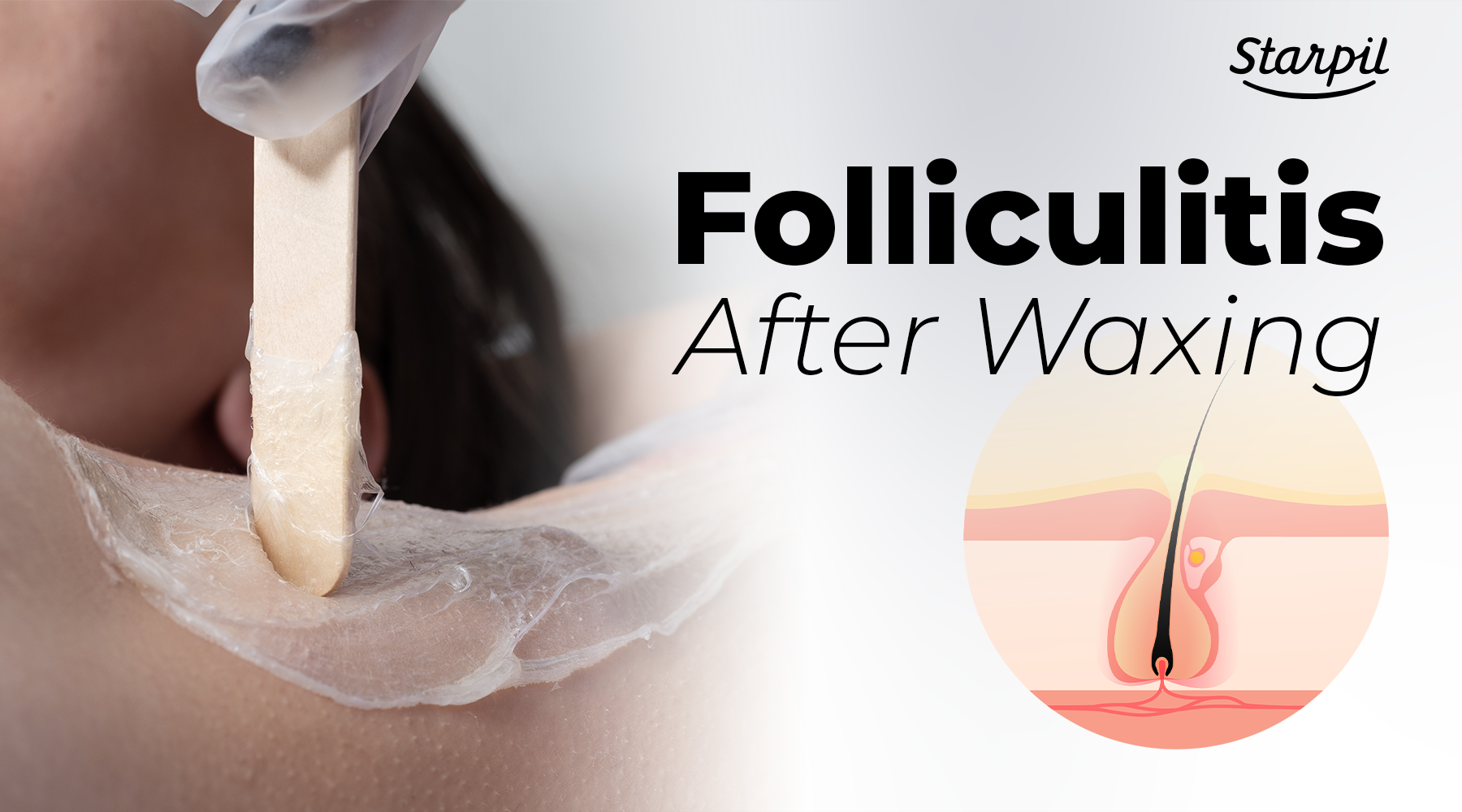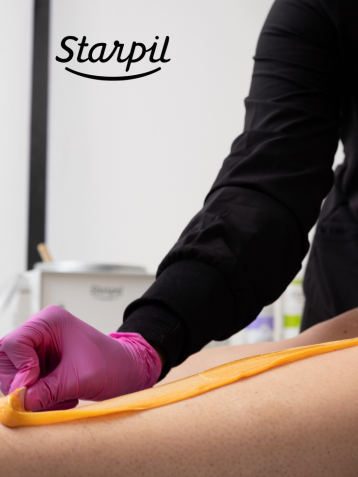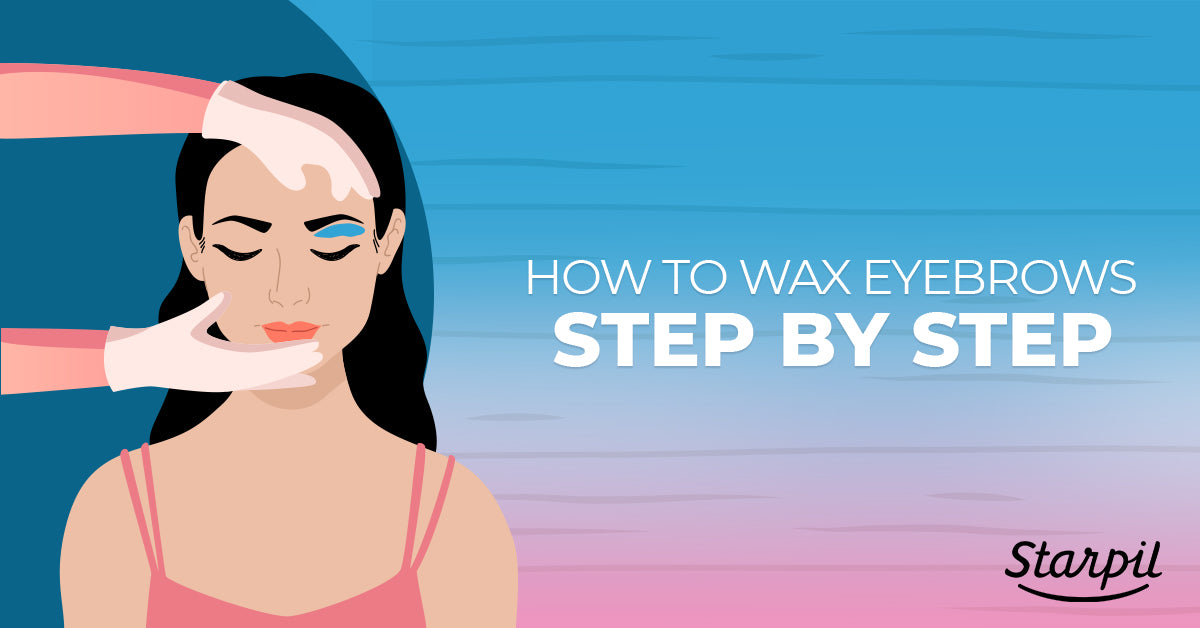Rashes After Waxing? What You Need to Know

Having bumps after waxing or an after-waxing rash isn’t something anybody wants, but it does sometimes happen immediately following a waxing service. There are a variety of reasons why people might experience short-term redness or irritation after waxing, but if a waxing rash persists, there are a variety of ways to address this.
- What is a Waxing Rash?
- Waxing Rash vs. Waxing Allergic Reaction
- How to Prevent Waxing Rashes
- How to Get Rid of a Rash After Waxing
- Final Thoughts
If you or your clients experience ongoing rashes after waxing services, prevention and treatment should definitely be a priority throughout the course of their appointment. So how do you treat and prevent waxing rashes? The answer lies in understanding the types out there and how to address them on various unique parts of the body.
READ: Folliculitis After Waxing
What is a Waxing Rash?
Though there are different types of rashes after waxing, generally speaking, a waxing rash is irritation, redness, or inflammation caused by the action of removing hair follicles from the root. Since these hairs are forcibly removed with wax, the skin can have a variety of reactions due to either the hair itself being removed or the wax being removed from the skin.

There are many types of waxing rashes, all with slightly different symptoms. The following are the most popular types of waxing rashes:
- Folliculitis: Folliculitis is a common waxing reaction that results from the hair follicle getting damaged or injured during the process of hair removal, which then leaves the skin vulnerable to bacteria buildup. This then causes a rash or inflammation that usually recedes after a couple of days.
- Ingrown Hairs: Ingrown hairs might not also be considered a type of rash, but the event of hair growing back into the skin to create the appearance of pus-filled bumps creates a rash in and of itself. These pimple-like bumps usually appear on those susceptible a couple of days after waxing if not prevented, and are a form of folliculitis.
- Contact Dermatitis: This type of rash can be of special concern to those with very sensitive skin. This type of rash can be caused just by the skin’s interaction with certain kinds of waxes that contain dyes, fragrances, or other ingredients. Its symptoms are categorized by itching, swelling, or inflammation.
READ: How to Treat & Prevent Ingrown Hairs After Waxing
Waxing Rash vs. Waxing Allergic Reaction
If your current rash symptoms don’t align with some of the ones outlined above, you might wonder if you’re instead having an allergic reaction to waxing. When it comes to waxing allergic reactions, though rare, there can be a variety of different triggers or causes for them. Some people can also be more sensitive than others, so try to know your skin’s sensitivity levels before going into a waxing appointment, and whether you might have issues with certain ingredients found in waxes.
Certain ingredients found in many waxing products, including pine rosins, copolymers, or beeswax can cause allergic reactions in those with sensitivities to these ingredients. Before going into your appointment, ensure that you let your esthetician know ahead of time if you have any of these allergies.
Additionally, whether working with a professional or waxing at home, know that there are formulas available to you that do not contain these sorts of ingredients. If you have any concerns regarding your skin’s sensitivities or possible reactions, ask for your esthetician to use Starsoft Hard Wax for your hair removal, whose formulas contain no dyes, fragrances, or pine rosins, and are hypoallergenic.
Histamine Reactions to Waxing
Another type of reaction some with especially sensitive skin can experience due to waxing is a histamine reaction. Histamine reactions occur when the hair follicles are shocked during the hair removal process, which causes a rash after the wax is removed. This exfoliation can irritate sensitive skin and cause symptoms including prolonged redness, hives, sneezing, or red bumps.
If you think the reaction you’re having to waxing is a histamine reaction, you can consult our complete resources regarding this reaction to learn more about symptoms, prevention, and treatment.
READ: What is a Histamine Reaction After Waxing?
How to Prevent Waxing Rashes
There are a variety of ways to prevent waxing rashes or irritation after your waxing appointment. The following include some service-specific tips on how to lessen your chance of getting a rash, as well as some general post-wax care go-to’s.
Rash on Face After Waxing
Now that we’ve addressed what the specific types of waxing rashes are and which are most common, let’s take a closer look at waxing rashes on different parts of the body, and how to treat them.
First thing’s first when it comes to getting some bumps on the face after waxing: it’s normal! Many people get some initial bumps on the face post-wax, which usually disappear in a day or two. If these bumps persist, however, we’ve got some ways to address this issue.
Nobody wants bumps on their face, of course, but this is very preventable and treatable. One of the most important things you can do to prevent these bumps before waxing is to practice the right pre-wax care procedure.
Practicing the right pre-wax care is especially important for facial waxing since this is such a delicate and sensitive area. Try to exfoliate the face two days before a waxing appointment to cleanse and create the perfect surface for hair removal and prepare the skin. Keep in mind that waxing results are going to come out best on skin free from existing inflammation or breakouts.
Additionally, before your waxing appointment, apply pre-wax care, like Starpil’s Original Pre-Wax Care Gel, or for those with especially sensitive skin, Starsoft or Calendula Pre-Wax Care Gel, to cleanse the skin and dull waxing pain.
Practicing proper pre-wax care will keep the skin in its best condition for waxing and potentially save you from having to deal with any inflammation or rashes. For those with high sensitivity levels, however, using formulas made for highly sensitive skin like Starsoft Hard Wax, Calendula Hard Wax, or any of Starpil's other specialty wax formulas can also go a long way.
Rash After Waxing (Brazilian)
Another area of particular concern when it comes to rashes after waxing for many is the bikini line and the areas associated with Brazilian waxing.
Since this is a very sensitive area, practicing the right pre-wax care process remains integral for preparing for a bikini line or Brazilian wax. Exfoliate the area 2 days prior, and apply Original or Starsoft Pre-Wax Gel to the area before wax application to cleanse the surface and prepare the skin properly for waxing.
Even though many people tend to get bikini waxes done before going to the beach or being out and about in the water, it’s important to avoid the beach, public bodies of water, or excessive sun after getting a wax done. These factors can easily inflame or leave freshly waxed skin susceptible to bacteria or infection.
If you still experience face rashes after waxing or bikini line rashes after waxing despite these measures, there are still some more lifestyle measures to take to further prevent rashes from waxing.
Wear Loose ClothingYou should always wear loose-fitting, breathable underwear and clothing to your waxing appointments to allow the area to breathe and have adequate airflow. This will lessen heat or bacteria buildup post-wax.
Practice Post-Wax CareOne of the most important things you can do to ensure your waxing results will be at their best and last as long as possible is to practice proper post-wax care. This includes applying Post-Wax Lotion (check out our Original, Starsoft, Calendula, and Vegan varieties) to soothe skin, as well as Post-Wax Oil to increase skin hydration and remove residue.
24 hours after waxing, you should also apply Starpil’s Ingrown Hair Serum to the skin (especially Brazilian/bikini line areas) to gently exfoliate and remove any bacteria or debris, while also dissolving ingrown hairs before they form.
When you get home from your waxing appointment, applying a soothing or cold compress to freshly waxed skin can also reduce inflammation or the development of rashes or irritation. Applying a lightweight moisturizer (stay away from heavy lotions that may clog pores or overwhelm skin) can also reduce inflammation and calm skin.
Avoid Exercise & Rigorous Physical ActivityAlways avoid exercise, the gym, or any physical activity that could cause sweat or friction to freshly-waxed skin (yes, including sex!) for the first couple of days after your appointment. This will give the skin time to begin its recovery and will save you from causing any excessive irritation to the area.
Don’t Touch the Affected AreaIt might be tempting to do so, but avoid touching freshly waxed skin after your service - even if you notice a bump or two that might look perfect for popping. Touching otherwise popping zits or any inflammation post-wax will only spread bacteria and could even lead to further infection.
READ: Post-Wax Care: Tips & Best Practices
How to Get Rid of a Rash After Waxing
Now that we’ve touched on some prevention tips, let’s discuss how to treat waxing rashes if you’re already experiencing one. Keep in mind that most waxing rashes only last a few days, and will usually go away by themselves with the right care regimens and preventative care mentioned above.
For persisting rashes, however, there are many treatment options to either potentially get rid of them entirely or at least reduce symptoms. Keep in mind that these treatment suggestions do not include allergic reactions, which though usually treated by applying a hydrocortisone cream and taking an antihistamine or anti-inflammatory, can differ from person to person. If you’re not sure what your allergies are in relation to waxing or what your best treatment might be, consult a doctor. Now, back to rash treatment tips!
Cold CompressAs mentioned in our preventative section, applying a cold compress to freshly waxed skin can either prevent the development of a rash or dull its appearance or symptoms after it’s already developed. This soothing process will help to reduce inflammation or itchiness and will help to calm the skin.
MoisturizationApplying a lightweight moisturizer or hypoallergenic, lightweight lotion to skin post-wax can also dull inflammation or signs of irritation. Try not to use heavy or fragranced body lotions or creams on freshly waxed skin, however, as they can clog pores or irritate the skin even further. Starpil’s Intensive Post-Wax Cream is an excellent bet for those who want to soothe irritation and deeply moisturize skin post-wax.
Aloe VeraA popular anti-inflammatory, many apply aloe to irritated or inflamed skin to soothe it in the days following their wax. This natural gel soothes and calms inflammation, itchiness, and the appearance of rashes on a variety of skin types.
Cleanse & ExfoliateDon’t skimp on your regular care routines after waxing. Use a non-fragranced cleanser to clean skin after waxing during your regular routine, and exfoliate skin 24 hours after your appointment.
READ: Can I Shower After Waxing?
Final Thoughts
Now that you’ve got all of the tools you’ll need to prevent and treat rashes after waxing, you’re set up for success. Having the right pre and post-wax care routine will help keep your skin in its best condition and will save you from having to deal with inflammation or irritation after your appointment - because nobody wants to deal with that!
If you’re looking for the top pre and post-wax care products to help you along the way in your waxing journey, check out Starpil’s complete line of Pre & Post-Wax Care products for all skin and hair types - and keep your skin at its best.
FAQs | Rashes After Waxing
What causes a rash after waxing?
A rash after waxing is relatively common and can occur for several reasons. Temporary redness and small bumps immediately following a waxing treatment are generally normal skin reactions and typically subside within 24-48 hours. This initial reaction happens because waxing temporarily traumatizes the skin, causing inflammation as hair follicles are disrupted. However, more persistent or severe rashes may indicate folliculitis (infected hair follicles), contact dermatitis (reaction to wax ingredients), heat rash (from improper wax temperature), or even an allergic reaction.
First-time waxing clients often experience more noticeable reactions since their skin isn't yet accustomed to the procedure. While mild redness and bumps are expected, symptoms that worsen after 48 hours, spread beyond the waxed area, develop into pustules, or are accompanied by significant pain, swelling, or warmth may indicate an infection requiring medical attention.
How can I prevent getting a rash after waxing?
Preventing a rash after waxing begins with proper preparation and continues through careful post-wax care. Before your appointment, exfoliate the area 24-48 hours prior to remove dead skin cells that could clog follicles, but avoid exfoliating immediately before waxing as this can increase sensitivity. Ensure your skin is clean but avoid applying lotions, oils, or deodorants to the treatment area before waxing.
For the next 24-48 hours post-wax, wear loose, breathable cotton clothing to minimize friction and avoid activities that cause excessive sweating, such as intense workouts, hot tubs, saunas, or sunbathing. Keep the area clean using gentle, fragrance-free cleansers, and apply a light moisturizer to maintain skin hydration.
What's the difference between a normal waxing reaction and an infected rash?
Distinguishing between a normal post-waxing reaction and an infected rash is crucial for proper treatment. A normal reaction typically presents as uniform redness, slight swelling, and small bumps that appear immediately after waxing and begin to subside within hours, usually resolving completely within 24-48 hours. This reaction doesn't spread beyond the waxed area and isn't accompanied by significant pain, heat, or pus.
In contrast, an infected rash (folliculitis) typically develops or worsens 48-72 hours after waxing and presents as spreading redness, increasing pain, warmth to the touch, pus-filled or fluid-filled bumps, and sometimes fever or chills in severe cases.
What are the best products to treat a rash after waxing?
For immediate relief after waxing, use a professional-grade post-wax lotion to reduce inflammation and soothe skin. For sensitive skin, try Starpil’s Calendula Post-Wax Mousse, which incorporates antibacterial and anti-inflammatory properties to calm irritated skin while reducing risk of infection.
For ongoing care, gently exfoliating 48 hours after waxing helps prevent ingrown hairs that can lead to folliculitis. Fragrance-free moisturizers help maintain skin hydration without clogging pores, which is essential for proper healing. If bumps persist, products specifically formulated to treat ingrown hairs, like Starpil Ingrown Hair Serun, can be effective when used 2-3 times weekly starting 48 hours after waxing.
When should I see a doctor about a rash after waxing?
While most post-waxing skin reactions resolve with proper home care, certain symptoms indicate the need for medical attention. Consult a healthcare provider if your rash persists or worsens after 48-72 hours despite appropriate aftercare measures, as this may indicate an infection requiring prescription treatment.
Seek immediate medical care if you develop fever, chills, or flu-like symptoms alongside your rash, which could signal a more serious systemic infection. Severe pain that increases rather than decreases, especially when accompanied by significant swelling, warmth, or skin that feels hot to the touch, warrants prompt evaluation. If you experience unusual symptoms like dizziness, difficulty breathing, or widespread hives after waxing, seek emergency care immediately as these could indicate a severe allergic reaction.








Commentaires